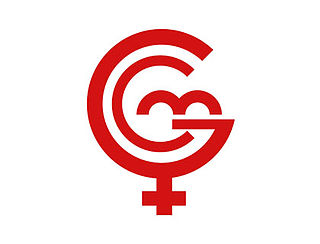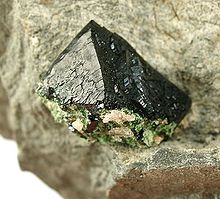
The Union Minière du Haut-Katanga was a Belgian mining company which controlled and operated the mining industry in the copperbelt region in the modern-day Democratic Republic of the Congo between 1906 and 1966.

La Générale des Carrières et des Mines (Gécamines) is a Congolese commodity trading and mining company headquartered in Lubumbashi, in the Katanga region of the Democratic Republic of Congo. It is a state-controlled corporation founded in 1966 and a successor to the Union Minière du Haut-Katanga. Gecamines is engaged in the exploration, research, exploitation and production of mineral deposits including copper and cobalt.
The Forrest Group is a group of companies founded around the mining industry in 1922. As of 2018, the Forrest Group is active primarily in Central and East Africa. It is owned by George Arthur Forrest, a Belgian entrepreneur of New Zealand descent.
Katanga Mining Ltd was a mining company operating in the Democratic Republic of the Congo with its headquarters in Canada. Katanga Mining operated a major mine complex in the Congo's Katanga Province, producing refined copper and cobalt. It claimed to have the "potential of becoming Africa's largest copper producer and the world's largest cobalt producer."
Kinsevere is an open pit mine and Heavy Media Separation plant with an electric arc furnace formerly operated by Anvil Mining, and now operated by Minerals and Metals Group. It is located 30 kilometres (19 mi) north of Lubumbashi, Katanga Province, Democratic Republic of Congo.
Copper mining in the Democratic Republic of the Congo mainly takes place in the Copper Belt of the southern Katanga Province of the Democratic Republic of the Congo.

The Kambove mines are a group of active or abandoned copper mines near Kambove in the Democratic Republic of the Congo. They were originally established by the Union Minière du Haut-Katanga under Belgian rule.
Tilwezembe is an open-pit copper and cobalt mine in Lualaba Province of the Democratic Republic of the Congo owned by Katanga Mining, a subsidiary of Glencore. Officially, Glencore has shuttered the mine, but the site is still being used by artisinal miners.
Mutoshi Mine is a copper mine in Katanga Province, Democratic Republic of the Congo. As of 2011 it was 70% owned by Anvil Mining and 30% by the state-owned Gécamines. The mine was placed on care and maintenance in late 2008.
The Ruashi Mine is an open-pit copper and cobalt mine operated by Metorex that is located about 10 kilometres (6.2 mi) from Lubumbashi in Katanga Province, Democratic Republic of the Congo. The project includes a plant to concentrate the ore from the Ruashi and Etoile mines, and a modern solvent extraction electrowinning (SX-EW) processing plant. As of 2008, annual capacity was estimated to be 10,000 tonnes of copper and 1,000 tonnes of Cobalt.
The Etoile Mine is an open-pit copper mine on the outskirts of Lubumbashi in Katanga Province of the Democratic Republic of the Congo (DRC). Chemaf owns the license. Chemaf is 95% owned by Shalina Resources and 5% by the DRC government.
Mashamba East is an open pit copper mine near to Kolwezi in Katanga Province, Democratic Republic of the Congo. As of 2014, the mine was not currently not being actively worked.
The Kamoto Mine is an underground copper and cobalt mine to the west of Musonoi in the former Katanga Province, Democratic Republic of the Congo. As of 2022, the site is the largest active cobalt mine in the world. The mine includes the Luilu metallurgical plant, which accepts ore from KOV mine and Mashamba East mine. The plant has polluted the Luilu River, and tailings also pollute the region with wind-blown dust. The Kolwezi Tailings Project is an attempt to recover additional metal from these tailings.
Luishia mine was an open pit copper and cobalt mine in Katanga Province, Democratic Republic of the Congo. A concession to the south of the mine has recently been opened to exploitation.

The Dikuluwe Mine is a copper and cobalt mine near to Kolwezi in Lualaba Province of the Democratic Republic of the Congo. Dikuluwe is the westernmost of the Dima Pit group, with Mashamba West and Mashamba East. The quarry was opened in 1975 and was planned to be connected to the nearby Mashamba West pit. The combined Dikuluwe and Mashamba West deposits are now run by La Sino-Congolaise des Mines SA (Sicomines), a joint venture majority owned by a Chinese consortium, with Gécamines holding a minority stake.
Nikanor plc was a publicly quoted holding company for Global Enterprises Corporate (GEC) with assets in the rich Copperbelt region in Katanga Province, Democratic Republic of the Congo (DRC).
The Kananga Mine is an open pit copper mine near Kolwezi in Katanga Province, Democratic Republic of the Congo. It is currently officially inactive.
Sodimico is a state-owned mining company in the Democratic Republic of the Congo (DRC).
Mukondo Mine is a copper and cobalt mine in Katanga Province, Democratic Republic of the Congo. As of 2011 it was operated by the Central African Mining and Exploration Company. It may be the richest cobalt reserve in the world.

Kamatanda is a region just north of Likasi in the Haut-Katanga Province of the Democratic Republic of the Congo. It gives its name to an open-pit copper mine, a railway junction, an abandoned airport and a residential area of Likasi.






